M. S. Howe0521868629, 9780521868624
Table of contents :
Cover……Page 1
Half-title……Page 3
Title……Page 5
Copyright……Page 6
Dedication……Page 7
Contents……Page 9
Preface……Page 17
1.2 The material derivative……Page 19
1.3 Conservation of mass: Equation of continuity……Page 20
1.4.1 Relative motion of neighbouring fluid elements……Page 21
1.4.2 Viscous stress tensor……Page 23
1.4.4 The Reynolds equation and Reynolds stress……Page 25
1.5 The energy equation……Page 26
1.5.1 Alternative treatment of the energy equation……Page 27
1.5.2 Energy equation for incompressible flow……Page 28
1.6 Summary of governing equations……Page 29
PROBLEMS 1……Page 30
2.2 Kelvin’s circulation theorem……Page 32
2.3.1 Bernoulli’s equation……Page 34
2.3.3 Streamlines and intrinsic equations of motion……Page 36
2.3.4 Bernoulli’s equation in steady flow……Page 38
2.4 Motion produced by a pulsating sphere……Page 39
2.5 The point source……Page 40
2.7 Monopoles, dipoles, and quadrupoles……Page 42
2.7.1 The vibrating sphere……Page 44
2.7.2 Streamlines……Page 46
2.8.1 Volume and surface integrals……Page 48
2.8.2 Green’s formula……Page 50
2.8.3 Sources adjacent to a plane wall……Page 52
2.9 Determinancy of the motion……Page 53
2.9.1 Fluid motion expressed in terms of monopole or dipole distributions……Page 55
2.9.2 Determinancy of cyclic irrotational flow……Page 57
2.9.3 Kinetic energy of cyclic irrotational flow……Page 58
2.10 The kinetic energy……Page 59
2.10.2 Energy of motion produced by a translating sphere……Page 61
2.11.1 Legendre polynomials……Page 63
2.11.2 Velocity potential of a point source in terms of Legendre polynomials……Page 68
2.11.3 Interpretation in terms of images……Page 70
2.12 The Stokes stream function……Page 71
2.12.1 Stream function examples……Page 73
2.12.2 Rankine solids……Page 74
2.12.3 Rankine ovoid……Page 76
2.12.5 Axisymmetric flow from a nozzle……Page 78
2.12.6 Irrotational flow from a circular cylinder……Page 81
2.12.7 Borda’s mouthpiece……Page 83
2.13 The incompressible far field……Page 85
2.13.1 Deductions from Green’s formula……Page 86
2.13.2 Far field produced by motion of a rigid body……Page 87
2.13.4 Pressure in the far field……Page 88
2.14 Force on a rigid body……Page 89
2.14.1 Moment exerted on a rigid body……Page 91
2.15 Sources near solid boundaries……Page 93
2.15.1 The reciprocal theorem……Page 94
2.16 Far-field Green’s function……Page 96
2.16.2 Far-field Green’s function for a sphere……Page 98
2.17 Far-field Green’s function for cylindrical bodies……Page 102
2.17.1 The circular cylinder……Page 103
2.17.2 The rigid strip……Page 104
2.18 Symmetric far-field Green’s function……Page 107
2.18.1 Far field of an arbitrarily moving body……Page 108
2.19.1 General form……Page 109
2.19.2 Airfoil of variable chord……Page 110
2.19.3 Projection or cavity on a plane wall……Page 111
2.19.4 Rankine ovoid……Page 112
2.19.5 Circular aperture……Page 113
PROBLEMS 2……Page 114
3.1.1 The stream function……Page 120
3.1.3 Uniform flow……Page 122
3.1.4 Flow past a cylindrical surface……Page 123
3.2.2 Uniform flow past a circular cylinder……Page 124
3.2.3 The line vortex……Page 127
3.2.4 Circular cylinder with circulation……Page 128
3.2.5 Equation of motion of a cylinder with circulation……Page 130
3.3 The Blasius force and moment formulae……Page 133
3.3.1 Blasius’ force formula for a stationary rigid body……Page 134
3.3.3 Kutta–Joukowski lift force……Page 135
3.3.4 Leading-edge suction……Page 136
3.4 Sources and line vortices……Page 137
3.4.2 Motion of a line vortex……Page 140
3.4.4 Kinetic energy of a system of rectilinear vortices……Page 145
3.5 Conformal transformations……Page 146
3.5.1 Transformation of Laplace’s equation……Page 147
3.5.2 Equation of motion of a line vortex……Page 150
3.5.3 Numerical integration of the vortex path equation……Page 151
3.6 The Schwarz–Christoffel transformation……Page 153
3.6.1 Irrotational flow from an infinite duct……Page 156
3.6.2 Irrotational flow through a wall aperture……Page 158
3.7.1 Coanda edge flow……Page 160
3.7.3 Separated flow through an aperture……Page 165
3.7.4 The wake of a flat plate……Page 169
3.7.5 Flow past a curved boundary……Page 170
3.7.6 The hodograph transformation formula……Page 176
3.7.7 Chaplygin’s singular point method……Page 177
3.7.8 Jet produced by a point source……Page 178
3.7.9 Deflection of trailing-edge flow by a source……Page 179
3.8 The Joukowski transformation……Page 185
3.8.1 The flat-plate airfoil……Page 188
3.8.3 Lift calculated from the Kirchhoff vector force formula……Page 191
3.8.4 Lift developed by a starting airfoil……Page 192
3.9 The Joukowski airfoil……Page 193
3.9.1 Streamline flow past an airfoil……Page 194
3.10 Separation and stall……Page 197
3.10.1 Linear theory of separation……Page 198
3.11 Sedov’s method……Page 201
3.11.1 Boundary conditions……Page 202
3.11.2 Sedov’s formula……Page 203
3.11.3 Tandem airfoils……Page 205
3.11.4 High-lift devices……Page 208
3.11.6 Point sources and vortices……Page 210
3.11.7 Flow through a cascade……Page 211
3.12.1 The vortex sheet wake……Page 213
3.12.2 Translational oscillations……Page 215
3.12.3 The unsteady lift……Page 216
3.12.4 Leading-edge suction force……Page 217
3.12.5 Energy dissipated by vorticity production……Page 219
3.12.6 Hankel function formulae……Page 220
PROBLEMS 3……Page 221
4.1 The vorticity equation……Page 229
4.1.2 Vortex tubes……Page 230
4.1.3 Movement of vortex lines: Helmholtz’s vortex theorem……Page 231
4.1.4 Crocco’s equation……Page 232
4.1.5 Convection and diffusion of vorticity……Page 233
4.1.6 Vortex sheets……Page 236
4.2 The Biot–Savart law……Page 239
4.2.1 The far field……Page 241
4.2.2 Kinetic energy……Page 245
4.2.3 The Biot–Savart formula in the presence of an internal boundary……Page 246
4.2.4 The Biot–Savart formula for irrotational flow……Page 247
4.3.1 Circular vortex filament……Page 250
4.3.2 Rate of production of vorticity at a nozzle……Page 251
4.3.3 Blowing out a candle……Page 253
4.3.4 Axisymmetric steady flow of an ideal fluid……Page 254
4.3.5 Hill’s spherical vortex……Page 255
4.4.1 Diffusion of vorticity from an impulsively started plane wall……Page 257
4.4.2 Diffusion of vorticity from a line vortex……Page 258
4.4.4 Motion of a sphere at very small Reynolds number……Page 260
4.4.5 The Oseen approximation……Page 263
4.4.6 Laminar flow in a tube (Hagen–Poiseuille flow)……Page 265
4.4.7 Boundary layer on a flat plate; Kármán momentum integral method……Page 267
4.5 Force on a rigid body……Page 271
4.5.1 Surface force in terms of the impulse……Page 272
4.5.2 The Kirchhoff vector force formula……Page 274
4.5.4 Arbitrary motion in a viscous fluid……Page 276
4.5.5 Body moving without rotation……Page 277
4.5.7 Bluff body drag at high Reynolds number……Page 279
4.5.8 Modelling vortex shedding from a sphere……Page 283
4.5.9 Force and impulse in fluid of non-uniform density……Page 288
4.5.10 Integral identities……Page 289
4.6.1 Moment for a non-rotating body……Page 291
4.6.2 Airfoil lift, drag, and moments……Page 292
4.7.1 Pressure expressed in terms of the total enthalpy……Page 294
4.7.2 Equation for B……Page 295
4.7.3 Solution of the B equation……Page 296
4.7.4 The far field……Page 297
PROBLEMS 4……Page 299
5.1.1 Conditions at the free surface……Page 304
5.1.2 Wave motion within the fluid……Page 305
5.1.4 Time harmonic, plane waves on deep water……Page 306
5.1.5 Water of finite depth……Page 308
5.2 Surface wave energy……Page 309
5.2.1 Wave-energy density……Page 311
5.2.2 Wave-energy flux……Page 312
5.2.3 Group velocity……Page 313
5.3.1 The interior damping……Page 315
5.3.2 Boundary-layer damping……Page 316
5.4 Shallow-water waves……Page 317
5.4.1 Waves on water of variable depth……Page 318
5.4.2 Shallow-water Green’s function……Page 319
5.4.3 Waves generated by a localised pressure rise……Page 320
5.4.4 Waves approaching a sloping beach……Page 325
5.5.1 Formulation of initial-value dispersive-wave problems……Page 327
5.5.2 Evaluation of Fourier integrals by the method of stationary phase……Page 329
5.5.3 Numerical results for the surface displacement……Page 331
5.5.4 Conservation of energy……Page 333
5.5.5 Rayleigh’s proof that energy propagates at the group velocity……Page 335
5.5.6 Surface wave-energy equation……Page 336
5.5.7 Waves generated by a submarine explosion……Page 337
5.6 Initial-value problems in two surface dimensions……Page 339
5.6.1 Waves generated by a surface elevation symmetric about the origin……Page 340
5.6.2 The energy equation in two dimensions……Page 342
5.7.1 One-dimensional waves……Page 343
5.7.2 Waves generated by motion of the seabed……Page 346
5.7.3 Tsunami produced by an undersea earthquake……Page 350
5.8 Periodic wave sources……Page 351
5.8.1 One-dimensional waves……Page 352
5.8.2 Periodic sources in two surface dimensions……Page 354
5.8.3 The surface wave power……Page 357
5.8.4 Surface wave amplitude……Page 358
5.9 Ship waves……Page 359
5.9.1 Moving line pressure source……Page 360
5.9.2 Wave-making resistance……Page 361
5.9.3 Moving point-like pressure source……Page 363
5.9.4 Plotting the wave crests……Page 367
5.9.5 Behaviour at the caustic……Page 369
5.9.6 Wave-making power……Page 370
5.10.1 Kinematic theory of wave crests……Page 372
5.10.3 Refraction of waves at a sloping beach……Page 375
5.11 Wave action……Page 382
5.11.1 Variational description of a fully dispersed wave group……Page 383
5.11.2 Fully dispersed waves in a non-uniformly moving medium……Page 384
5.11.3 General wave-bearing media……Page 387
5.12.1 Diffraction by a long, straight breakwater……Page 391
5.12.2 Solution of the diffraction problem……Page 392
5.12.3 The surface wave pattern……Page 395
5.12.4 Uniform asymptotic approximation: Method of steepest descents……Page 397
PROBLEMS 5……Page 402
6.1 The wave equation……Page 408
6.1.1 The linear wave equation……Page 409
6.1.2 Plane waves……Page 410
6.1.3 Speed of sound……Page 411
6.2.1 The impulsive point source……Page 413
6.2.2 Green’s function……Page 414
6.2.4 Sound from a vibrating sphere……Page 415
6.2.5 Acoustic energy flux……Page 417
6.2.6 Green’s function in one space dimension: Method of descent……Page 418
6.3 Kirchhoff’s formula……Page 419
6.4.1 Generalised Kirchhoff formula……Page 421
6.4.3 The compact approximation……Page 422
6.4.4 Rayleigh scattering: Scattering by a compact body……Page 425
6.5 One-dimensional propagation through junctions……Page 427
6.5.2 Continuity of pressure……Page 428
6.5.3 Reflection and transmission at a junction……Page 429
6.6 Branching systems……Page 431
6.6.1 Fundamental formula……Page 432
6.6.2 Energy transmission……Page 433
6.6.3 Acoustically compact cavity……Page 434
6.6.4 The Helmholtz resonator……Page 435
6.6.5 Acoustic filter……Page 436
6.6.6 Admittance of a narrow constriction……Page 437
6.7.1 Rayleigh’s method for low-frequency sound……Page 439
6.7.3 Admittance of the open end……Page 441
6.7.4 Open-end input admittance……Page 442
6.7.5 Flanged opening……Page 444
6.7.6 Physical significance of the end correction……Page 446
6.7.7 Admittance of a circular aperture……Page 449
6.8 Webster’s equation……Page 450
6.9.1 The compact Green’s function……Page 453
6.9.2 Wave generation by a train entering a tunnel……Page 457
6.10 Damping of sound in a smooth-walled duct……Page 463
6.10.1 Time harmonic propagation in a duct……Page 464
6.10.2 The viscous contribution……Page 465
6.10.3 The thermal contribution……Page 467
PROBLEMS 6……Page 468
Bibliography……Page 473
Index……Page 475
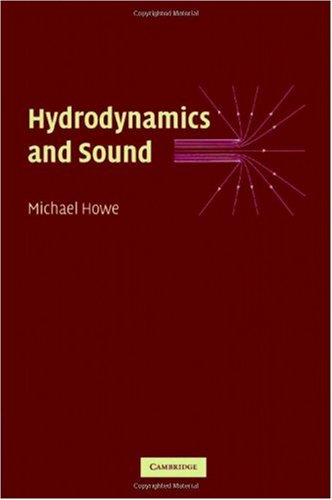
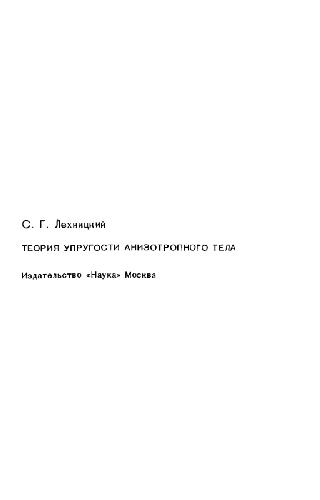
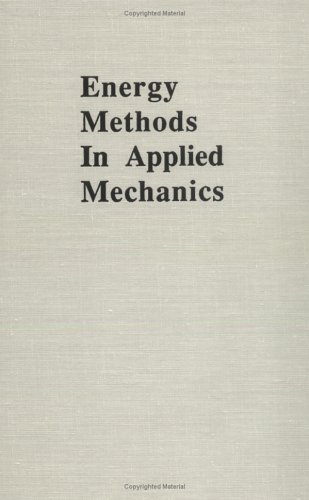
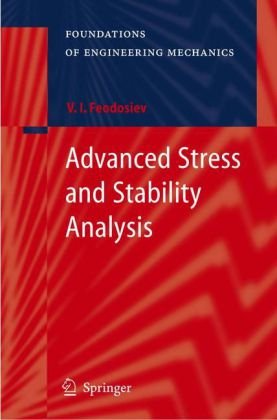
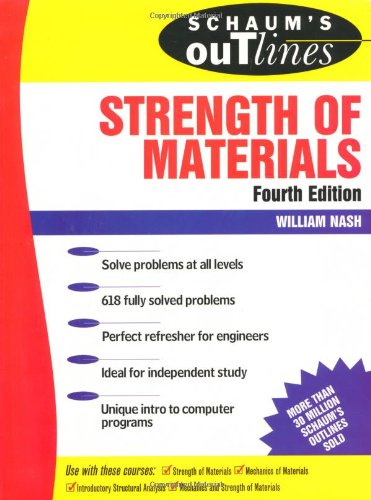
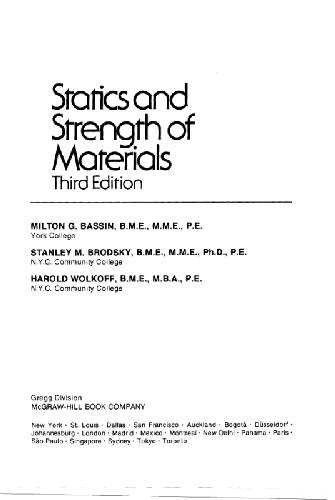
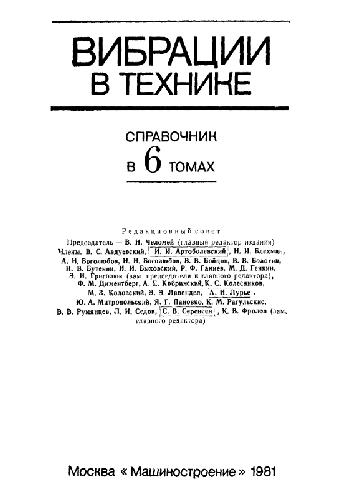
Reviews
There are no reviews yet.